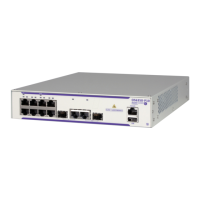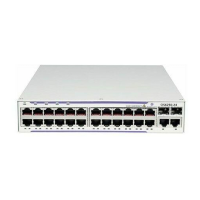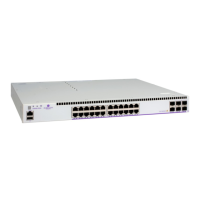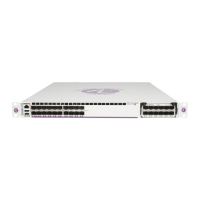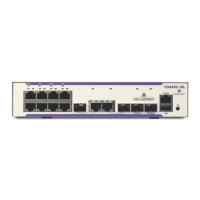Configuring DHCP Relay Configuring UDP Port Relay
OmniSwitch AOS Release 8 Network Configuration Guide December 2017 page 21-12
Configuring UDP Port Relay
In addition to configuring a relay operation for BOOTP/DHCP traffic on the switch, it is also possible to
configure relay for generic UDP service ports (NBNS/NBDD, other well-known UDP service ports, and
service ports that are not well-known). This is done using UDP Port Relay commands to enable relay on
these types of ports.
The UDP Port Relay function is separate from the previously described functions such as global DHCP,
per-VLAN DHCP, and automatic IP configuration. Using UDP Port Relay does not exclude or prevent the
other DHCP Relay functions from working. However, the following information is important to remember
when configuring BOOTP/DHCP relay and UDP port relay:
• You can configure either the ip helper or ip udp relay service but not both at the same time.
• The ip udp relay service command can also be used to enable or disable relay for DHCP well known
ports 67 and 68.
• If the BOOTP/DHCP relay service is disabled, the ip helper configuration is not retained and all
dependant functionalities, like automatic IP configuration for VLAN 1 and telnet, is disrupted.
• The DHCP Relay Agent Service must support the BOOTP/DHCP protocol, specifically UDP port 67
and 68.
• Use port 67 and/or port 68 with the ip udp relay service command to assign the well-known service
BOOTP.
• Relaying DHCP traffic is available on a global and per-VLAN basis. Using this function on a per-
VLAN basis requires setting the DHCP relay forwarding mode to per-vlan-only. UDP port relay for
generic services is only available on a per-VLAN basis, however it does not require enabling the per-
vlan-only forwarding option.
Configuring UDP Port Relay for generic UDP services is a two-step process. The first step involves
enabling UDP Port Relay on the generic service port. The second step involves specifying a VLAN that
relays and forwards the traffic destined for the generic service port. Both steps are required and are
described below.

